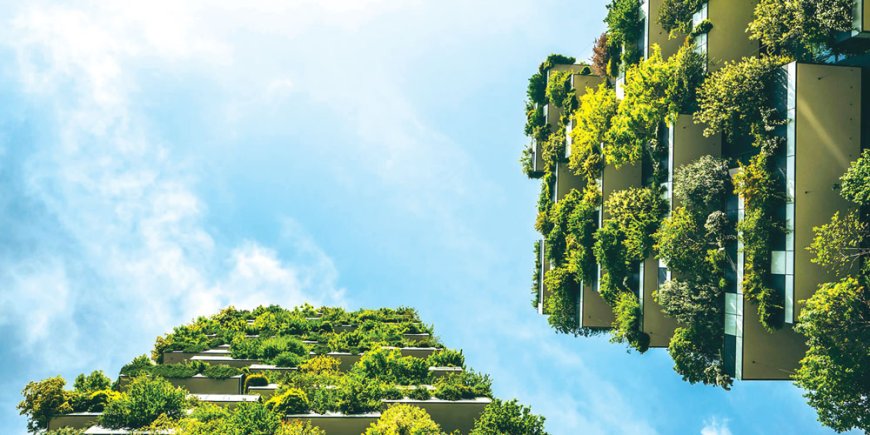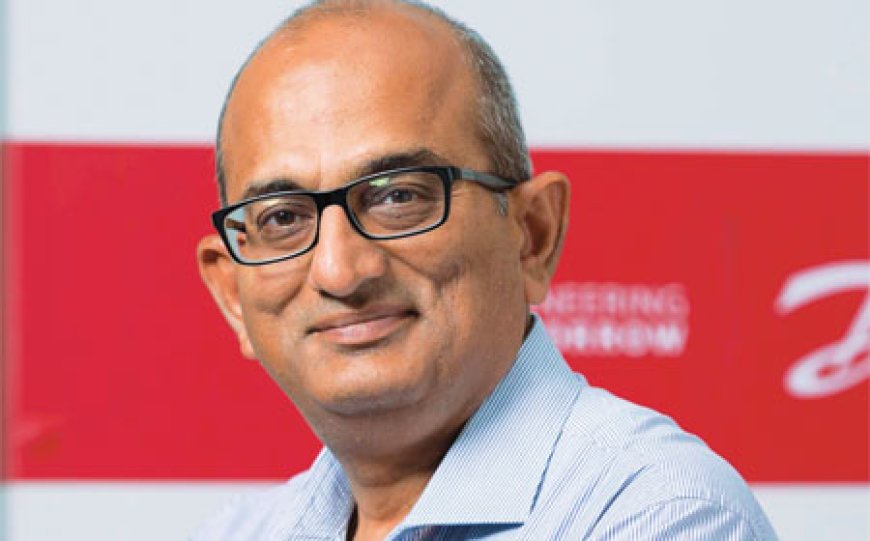Creating sustainable ecosystem

The green building concept is gaining momentum in India due to the growing environment awareness and the need to conserve the natural resources of water and energy. Construction Times finds out the prevailing trends and how the industry players are gearing up for green buildings.
Green building practices are increasingly becoming prominent across the real estate industry because they save money, improve efficiency, lower carbon emissions and create healthy places for people to live, work and play in. The concept of green buildings is gaining importance at a faster pace in India.
Evolving trends
India was ranked second in the U.S. Green Building Council’s (USGBC) list of the top 10 countries and regions for LEED certification in 2022. India awarded LEED certification to a total of 323 projects last year, covering more than 10.47 million gross area square meters (GSM) of space – an increase of more than twice the number of projects in 2021. With rising occupier preference for green buildings and green leases, India’s green footprint is on the rise, especially in commercial buildings. Over the last few years, especially post-Covid-19, there has been a rise in green-certified stock for Grade A office buildings. As of the quarter September 2023, India has a total Grade A office stock of about 691 million sq ft, of which about 421 million sq ft of Grade A office stock have obtained at least one green certification.

According to Deep Vadodaria, CEO, Nila Spaces, from a consumption perspective, green buildings are gaining traction in India due to increasing awareness of climate change and the need to reduce carbon emissions. “The Indian government has taken a multi-layered approach to promote sustainability in real estate, including incentives like tax rebates for green buildings and implementing green certifications. Urban renewal and the development of smart cities with eco-friendly infrastructure has also driven the adoption of green buildings,” he adds.
Green trends in commercial/industrial buildings

According to TERI figures, a green building typically reduces the energy consumption by 30%-50% and water consumption by up to 40% and the costs associated with them. In the lifecycle of industrial building and office buildings, the most significant cost during the Operation and Maintenance is the cost associated with energy and water consumption. Prasanna Venkatesh G
According to Vadodaria, urban renewal projects are also adopting green practices by transforming abandoned industrial areas into eco-friendly pedestrian communities with efficient public transit and smart infrastructure that optimizes resource use. “For example, Gift City in Gujarat demonstrates how new city development projects are being designed with sustainability as a priority. Gift City itself is IGBC Platinum rated,” he adds.

“The latest trend in industrial and commercial buildings adopting green practices is the integration of smart building technologies, also known as intelligent buildings. This trend aligns with the broader movement toward sustainability in the construction industry,” adds Ravichandran Purushothaman, President, Danfoss India. According to him, Smart buildings contribute to the overarching goal of sustainability by optimizing resource use and reducing the environmental impact of building operations. Danfoss actively promotes intelligent building solutions, offering modern HVAC 4.0 solutions and driving digital transformation for enhanced efficiency.
This year’s architectural trends emphasizing on sustainability include nature-centric spaces, net-zero energy buildings, circular design principles, smart technology integration, adaptive reuse of structures, transparent and ethically sourced materials, resilient designs for climate change, and community-centric spaces.
Challenges in green buildings
The growth of green building practices faces numerous challenges hindering widespread adoption. Venkatesh elaborates, “A primary obstacle is the perceived higher initial construction costs associated with implementing green features and technologies, despite the potential for long-term savings. Additionally, a lack of awareness among developers, builders, and consumers about the benefits of sustainable construction impedes adoption, emphasizing the need for educational initiatives. Inconsistencies in regulatory standards, shortage of skilled professionals in green building practices, limited availability and high costs of sustainable materials, and financing challenges further contribute to the barriers. Moreover, keeping pace with rapid technological advancements, changing market perceptions, fostering industry collaboration, and addressing the resilience of green buildings to climate change are critical components in overcoming these challenges.”
Outlook green
According to Vadodaria, the outlook for green buildings in India is highly promising, with the market projected to double to 10 billion sq ft and valued at US$ 35-50 billion. Government policies like tax rebates for IGBC/GRIHA certified buildings and urban housing programs are driving growth.
Venkatesh feels that the focus on sustainability, environmental responsibility, and energy efficiency had been driving increased interest and investment in green building practices. “Currently, over 40% of India’s commercial Grade A office stock is green certified, with projections to surpass 50% in the next decade, aligning with global Environmental, Social, and Governance (ESG) trends,” he adds. According to him, Sobha uses materials with recycled content, for instance, industrial waste such as Ground Granulated Blast-furnace slag (GGBS) to reduce the use of cement; procuring locally to the extent possible; ensuring at least 33% of area in all projects are dedicated green spaces and giving importance to local species.
From the company’s vision perspective, Purushothaman says, “Danfoss envisions a pioneering role in fostering sustainable green building practices within industrial buildings. The company aims to create comfortable, efficient, and sustainable environments while optimizing building performance.” According to him, the company focuses on demonstrating and analyzing the technical and economic advantages of intelligent control of components and systems, addressing heating and cooling solutions. Moreover, Danfoss aims to be a leading global partner with transformative technologies paving the way for the green transformation.







